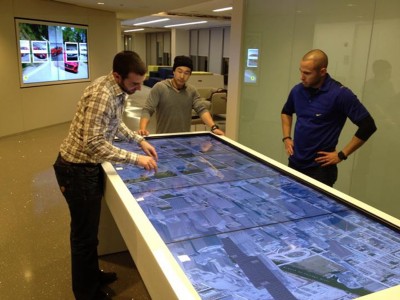User experience
All of the hardware components will be little use, of course, if there is not already a clear definition of how software will be used to operate the video wall. This calls for careful planning of the content and experience strategy.
In some touch-enabled video wall experiences, every possible interaction appears on-screen when a passerby first approaches the structure. This can be information overload, which will either make people confused what action they should take or lead them to assume the system is too complex for them to understand. It is important not to ask too much from them, tell them what to do or scare them away with too much information right off the bat.
The navigation experience should instead subtly lead users toward the client’s desired end point. This is called ‘conversion,’ a tenet already well-established throughout the online user interface (UI) development community.
The content will need to illustrate a value proposition, creating a call to action with a defined reward for the user. Then, as the user zooms in, the layers of content change before his/her eyes, offering new paths depending on which way he/she swipes the screen and clearly explaining what is next.
These types of immersive applications generally require no less than six months of planning, content development and user experience (UX) design. It is also important to use interactive software that can report on and analyze user interactions, so information can be gleaned from the actual real-world use of the video wall application.
Jessica Webster is art director for Horizon Display, which provides multi-touch monitors, kiosks, table displays and video walls. She works with clients and the company’s interactive strategy team to design graphical representation of content concepts. For more information, visit www.horizondisplay.com.






